Education – Awareness
This project blog emphasizes the educational and awareness aspects of our study. We have gained significant experience in fisheries and fisheries behaviour through various conservation and management projects in the research area. Our most recent and comprehensive experience is derived from this SOSF project, emphasizing the crucial role of education and awareness studies in conservation efforts. Our experience highlights the importance of tailoring education and awareness activities to specific stakeholders. We have categorized stakeholders into five main groups: Fishers (resource users), scientists, decision-makers, fishery controllers, and students.
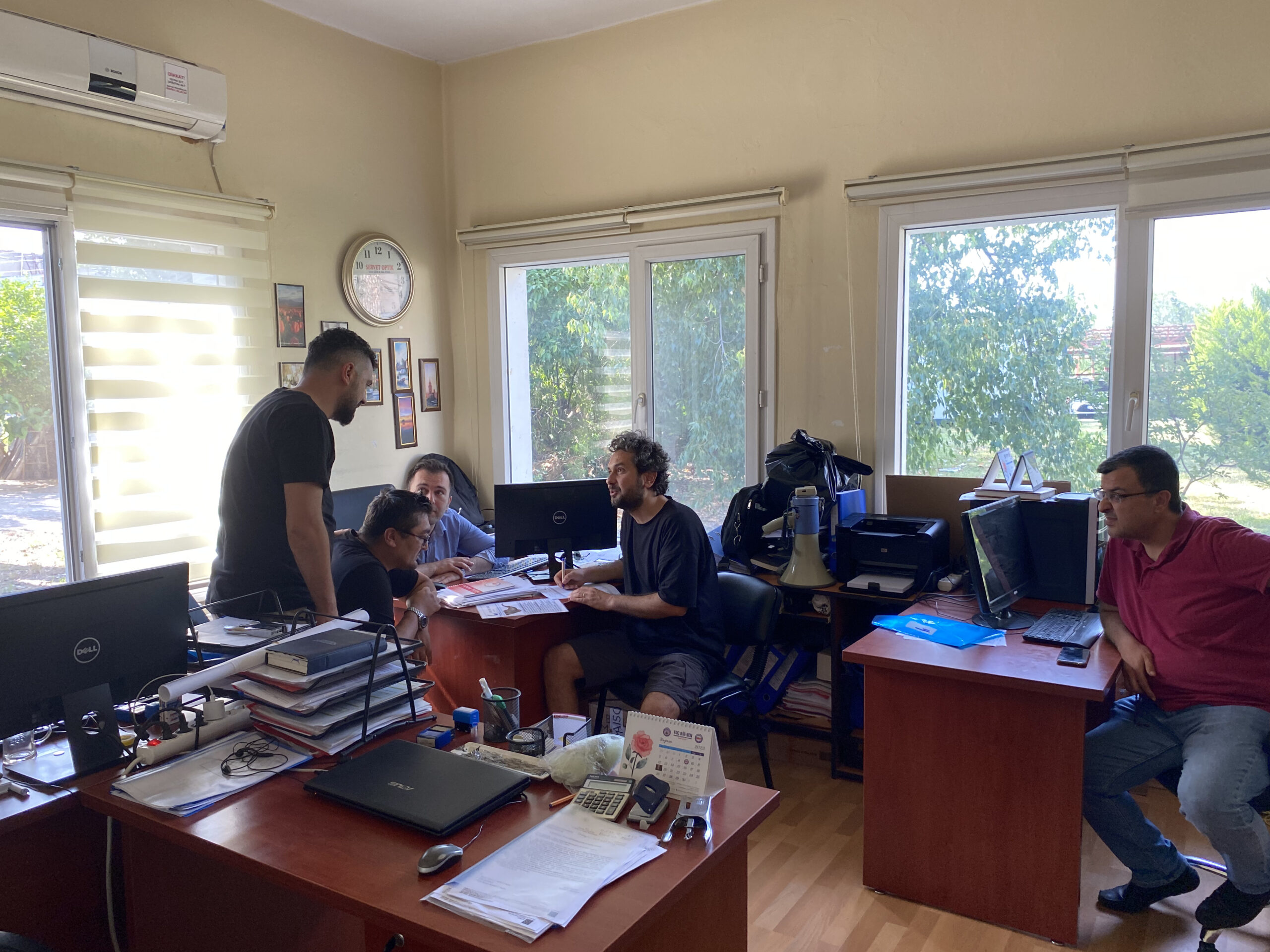
Meeting with fishery controllers in their office. Photo © Ismet Saygu
Up to now, we organized several stakeholders’ meetings, particularly with fishers and fishery controllers by visiting them in their work environments. We frequently visited the Karatas/Adana fishing port, the largest port in the project area, and the Adana Provincial Directorate of Agriculture and Forestry, which is responsible for monitoring fishing vessels and fishers. Additionally, it is noteworthy that we organized informative meetings in the fishing ports. Hereby, we communicated with fishers, listened to their problems, and thereby built a sustainable network and reliable communication.
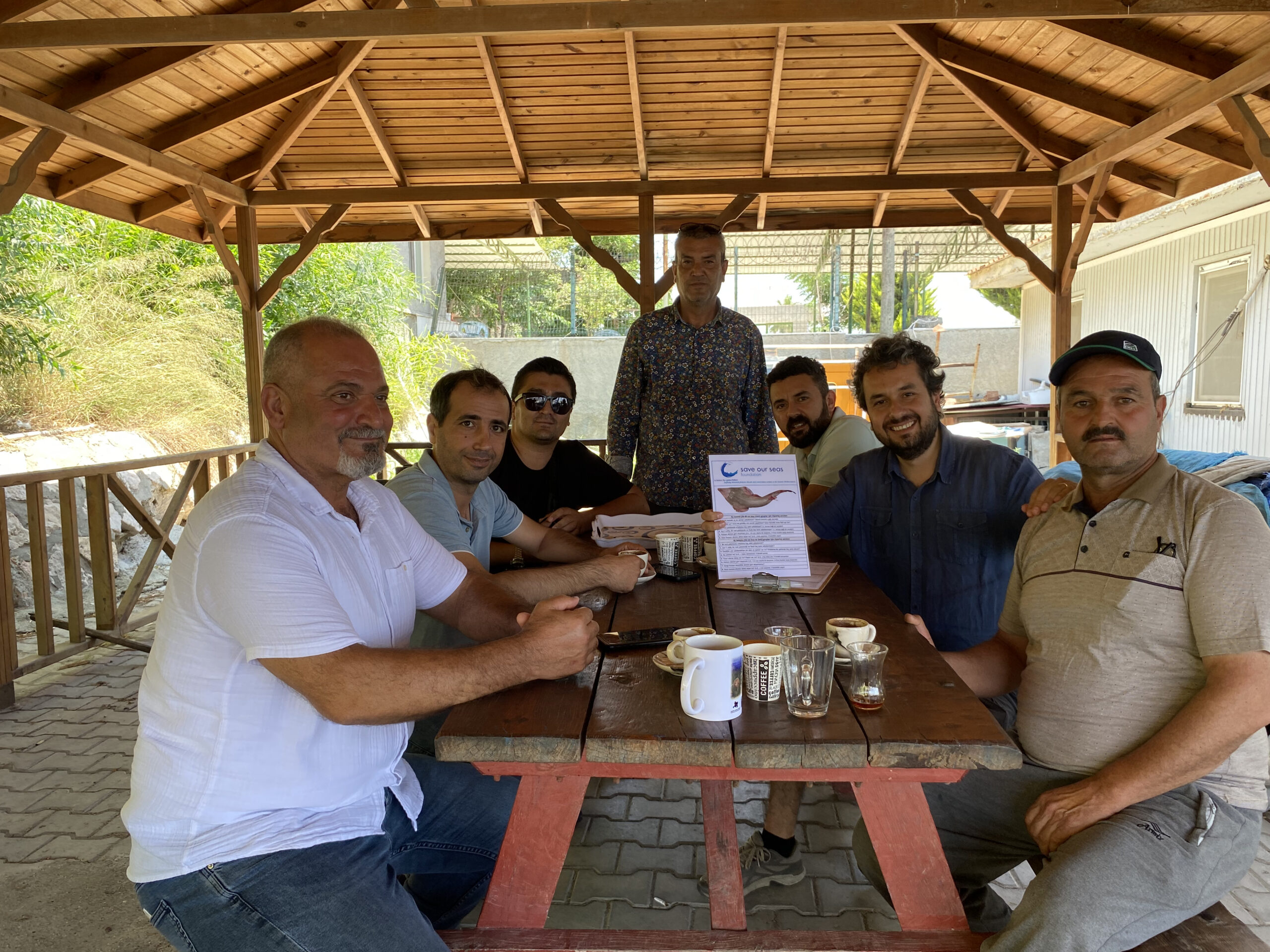
Meeting with fishers and fishery controllers in the Kataras/Adana fishing port. Photo © Ismet Saygu
Several fisheries have assisted us in organizing and conducting sea surveys, while the controllers have gathered valuable information through their existing experience and networks with fishers. As a result, we have been successfully conducting fisheries-based sea surveys from September 15, 2023, and this effort will continue until April 15, 2024, to validate both Objective 1 and Objective 2 (please see the previous blog page). Moreover, we are now integrating a self-sampling approach by involving fishers in data collection. Some fishers, who are curious and interested in marine conservation and science, have been educated to collect their own data. We are currently planning to collect data via fishers’ self-sampling in the following year, in addition to our default sampling protocol – fisheries-based sea surveys. This approach will provide us with an opportunity to compare the data collected through fishers’ self-sampling and fisheries-based sea surveys, thereby validating the accuracy of fishers’ self-sampling data.
We also maintain close relationships with fishery controllers. We firmly believe that raising awareness among controllers, who often possess undergraduate degrees in fisheries, aquatic and biological sciences, is crucial for comprehensive control and sustainable awareness among resource users, the fishers. Although they already have the necessary background to comprehend the principles of species conservation, providing training and shedding light on their potential involvement in the nature/species conservation concept is a requirement.
Throughout our years of conducting awareness activities, we’ve observed a positive impact on a limited number of fishers. Specifically, when fishers face economic challenges and are influenced by the environment to maximize gains, in other words, a ‘tragedy of the commons’ theory unfolds. Consequently, we suggest simultaneous education and awareness initiatives involving all stakeholders. However, we should not fall into the same rabbit hole again and instead bring about sweeping changes in the mindset regarding nature and species conservation. We recognize the need to address the education and awareness of students who represent the future of all stakeholders.
We have successfully engaged students with an interest in marine conservation. Two students, Sena Parlamış and Kaan Demirtaş, from the biology department of Ankara University, have joined our SOSF project team. They have been delivering presentations for peer-to-peer education, aiming to reach a broader student community interested in nature conservation. Prior to and after the presentations, we ask attendees three basic questions:
- ‘I am someone interested in nature/species conservation efforts.’
- ‘After the presentation, my interest in the field of conservation biology increased.’
- ‘I would like to volunteer for this project. You can add me to the email list.’
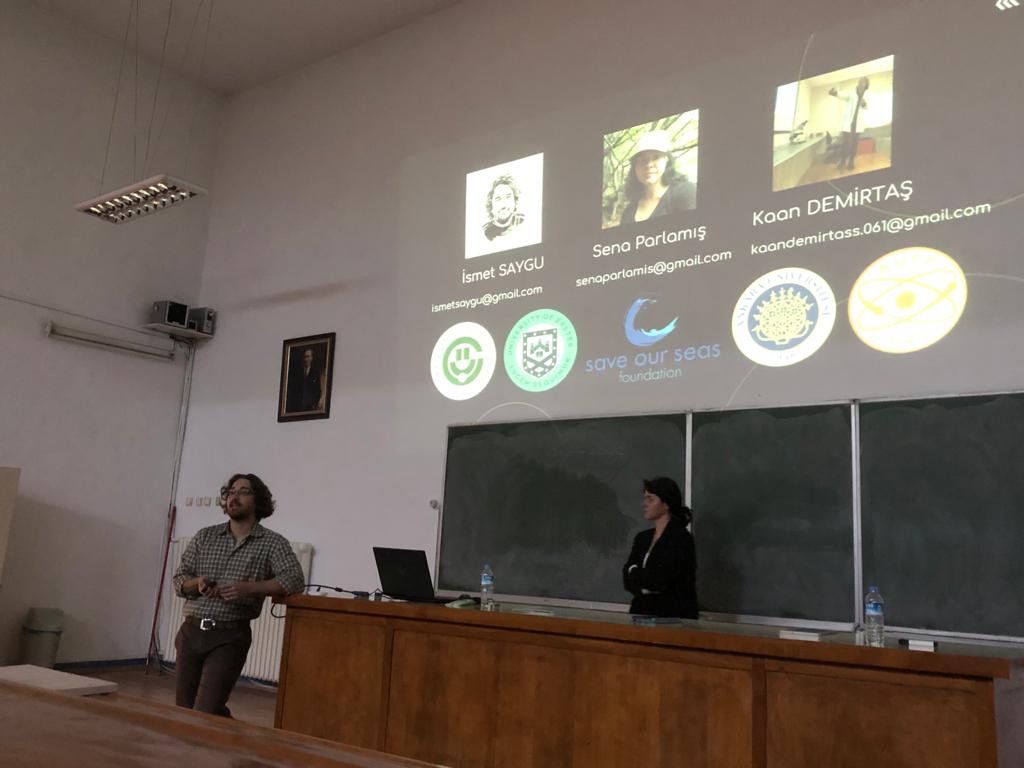
Peer to peer education: the presentation. Photo © Ismet Saygu
A Likert scale was used to evaluate the first two questions, and ‘yes-no’ was the only option for the last question. Preliminary results indicate that 57% of the students were already interested in conservation, prompting their attendance. Furthermore, 75% of the students gave 4 and 5 points to the second question, emphasizing the impact of the presentation and the personal touch provided by the presenters. Lastly, 87.5% of the attendees expressed their desire to voluntarily join project activities. The presentation series and data collection are ongoing, and we look forward to presenting the results of these awareness and education activities conducted by students. As the project leader, I extend my special thanks to students Sena Parlamış and Kaan Demirtaş, as well as all attendees.
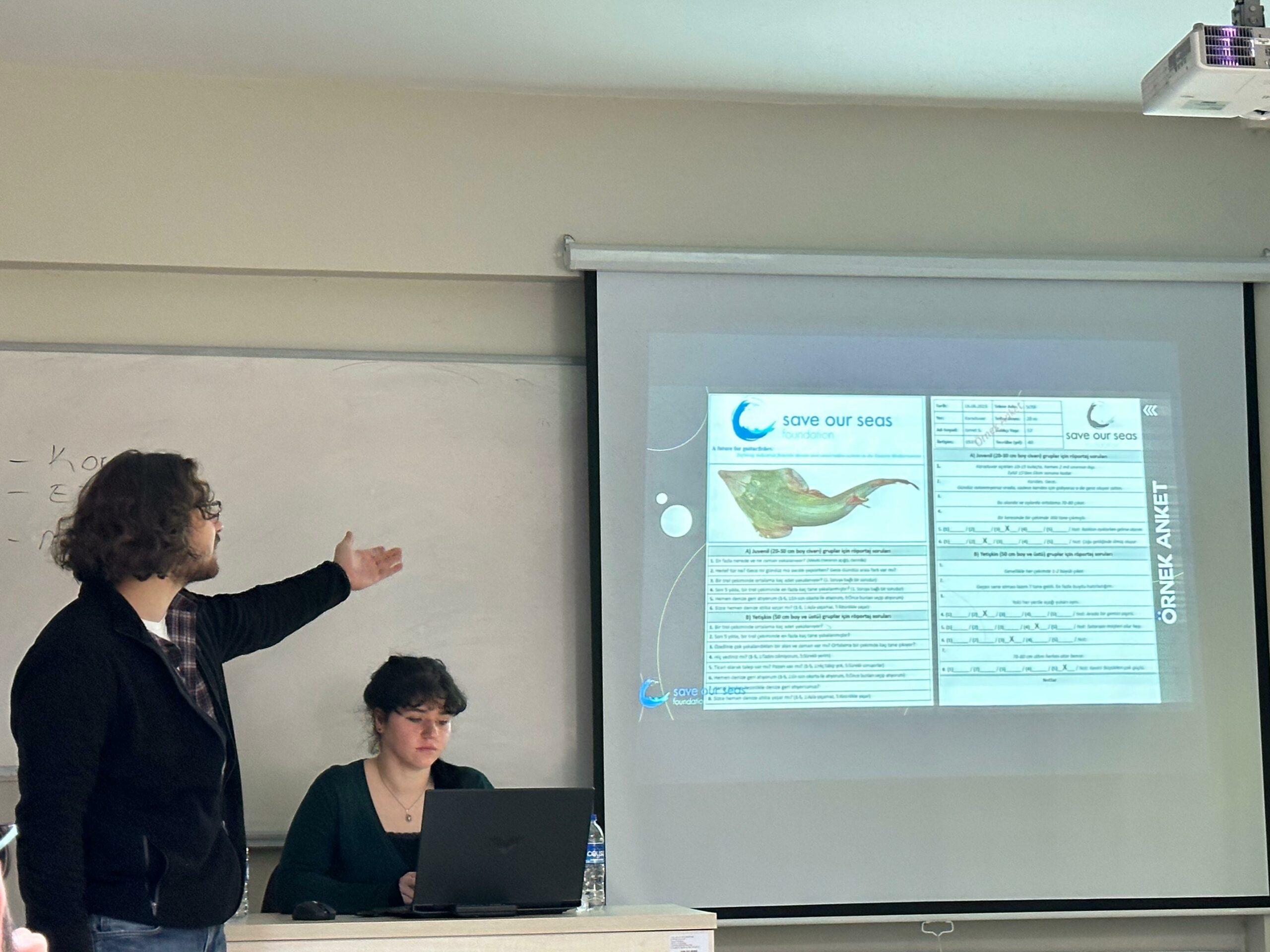
Peer to peer education: the presentation. Photo © Ismet Saygu
As a result, we highlight the importance of awareness activities. During the first year, we successfully established effective communication with the fishers, gaining valuable insights into their behaviour regarding guitarfish and species conservation in general. Similarly, we fostered communication with other stakeholders, particularly undergraduate students, and provided them with education for peer outreach, anticipating that they would become more active and experienced in the following years.
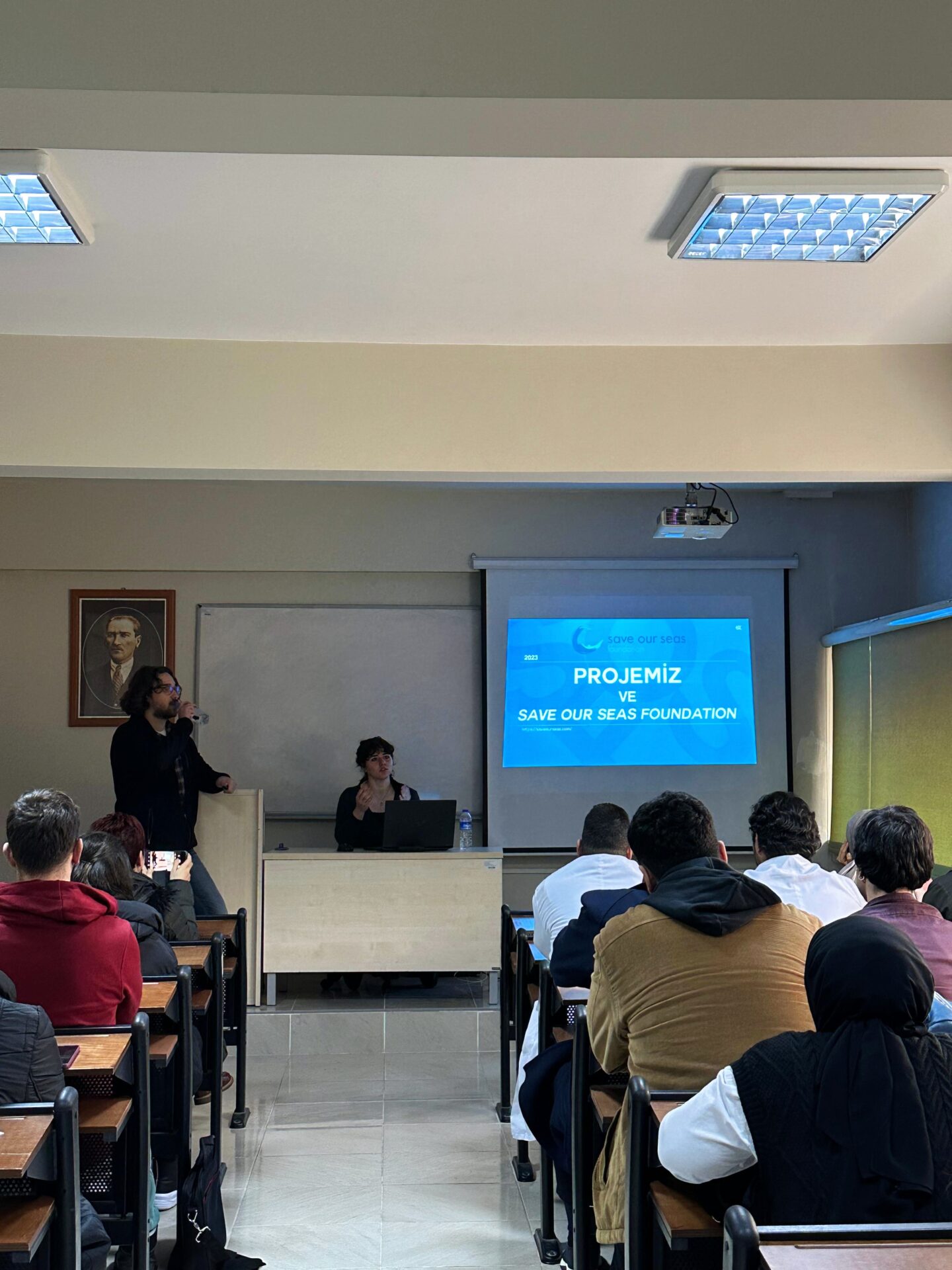
Peer to peer education: the presentation. Photo © Ismet Saygu
